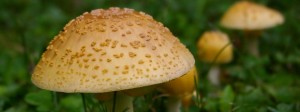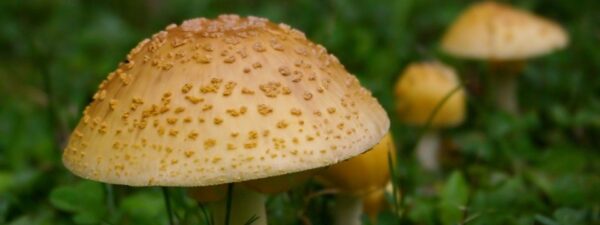Mushroom poisoning, also called mycetism, occurs when toxic substances present in a mushroom are eaten, typically due to mistaking poisonous mushrooms for the edible ones. The severity of effects ranges from discomfort to the gastrointestinal tract to death. To avoid any case of misidentification, avoid ingestion of any mushroom acquired from the forest.
Mushrooms can be placed in most meals which makes them very popular to all cuisines. They are tasty and widespread throughout the world. Unfortunately, there is no way to decipher whether a specie of mushroom is edible or not by simply looking. There are no general guidelines for identifying toxic mushrooms.
Deadliest Poisonous Mushrooms
There are thousands of identified species of mushroom. Only a fewdozens are identified as either toxic or containing significant toxins. Most of the fatal poisonings are due to ingestion of Amanita phalloides species. The list below will enumerate the five deadliest poisonous mushrooms
- Deadly Conocybe (Pholiotinafilaris)
- Conical caps
- Rusty brown gills
- Fatal
- Death Cap (Amanita phalloides)
- Medium to large mushroom
- Highly toxic
- Deadly Galerina (Galerinamarginata)
- Light brown to rusty brown in color
- Harms liver cells, kidneys and nervous system
- False Morel (Gyromitraesculenta)
- Sponge mushrooms, resembled the surface of human brain
- Carcinogenic
- Destroying Angel (Amanita virosa)
- White gills beneath cap
- Most common
Causes of Mushroom Poisoning
As previously mentioned, wrong identification is the most common cause of mushroom poisoning, however, there are several other causes for mushroom poisoning.
- Misidentification of toxic mushroom as edible species
- Close resemblance in morphology and color
- Poisoned by insecticides and herbicides
- Contaminated mushrooms by pollutants
- Rotten edible mushrooms leading to food poisoning
Symptoms of Mushroom Poisoning
There are many different toxins present in poisonous mushrooms, therefore, there are different target organs. The toxicity of the toxin present in the mushroom will create a variety of symptoms with respect to mushroom poisoning. However, some of the common symptoms include:
- Stomach cramps
- Sweating
- Nausea and vomiting
- Diarrhea
- Hot flushes
- Arrhythmia
- High fever
- Weakness and fainting
- Dizziness and headaches
- Blurred vision
- Constricted pupils
- Hallucinations and delirium
- Breathing problems
- Confusion
- Excessive thirst
Treatment for Mushroom Poisoning
Although majority of mushroom poisonings are not life-threatening, they, 
- Call for emergency medical assistance or go to the nearest hospital.
- Immediately remove any remaining mushrooms from the mouth.
- Try to identify the mushroom ingested. If not sure, bring a sample.
- Drink five to six glasses of water and induce vomiting.
- In the absence of diarrhea, try taking laxatives.
Mushroom poisoning can be fatal if not treated and first aid training can help in cases of ingestion. First aid training teaches how to administer proper treatment for various poisons and the different ways of obtaining them in the body, including mushroom poisoning.

